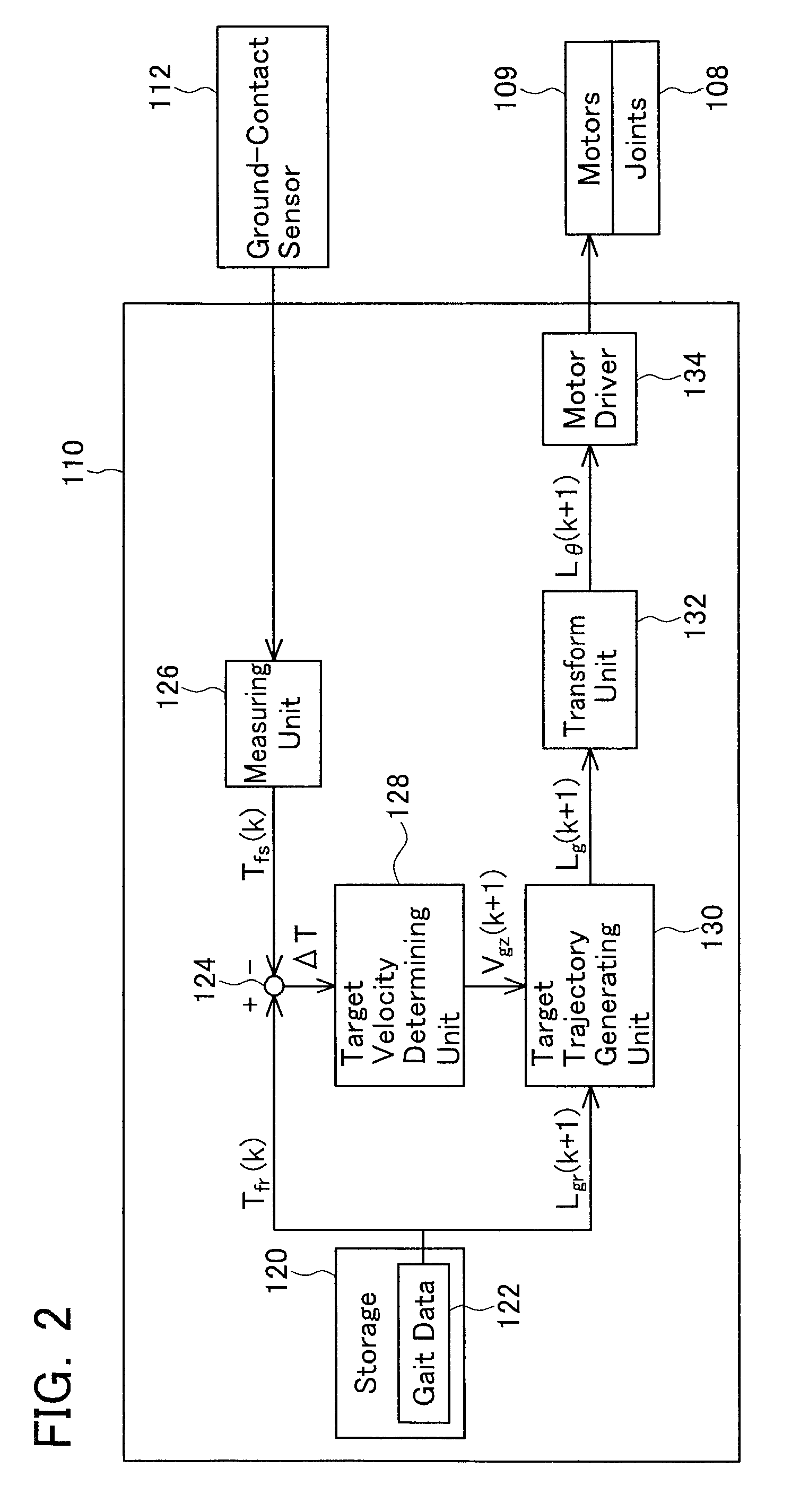Legged robot
a robot and leg technology, applied in the field of leg robots, can solve the problems of inability to perfectly simulate the motion of the leg robot, inability to compensate by successive feedback control, and errors between the motions realized on the computer in accordance,
- Summary
- Abstract
- Description
- Claims
- Application Information
AI Technical Summary
Benefits of technology
Problems solved by technology
Method used
Image
Examples
Embodiment Construction
[0027]A description will now be given of a preferable legged robot with reference to drawings.
[0028]FIG. 1 shows a schematic side view of a legged robot 100. The legged robot 100 is a robot in which one leg 104 is connected to a trunk link 102. Although the robot may have any number of legs, the present embodiment exemplifies a legged robot having one leg 104 for the sake of easy understanding of the motion of the robot.
[0029]The leg 104 of the robot 100 includes three links 106a, 106b, 106c, and three joints 108a, 108b, 108c. The three links 106a, 106b, 106c are hereinafter referred to as “links 106” in general. Similarly, the three joints 108a, 108b, 108c are collectively referred to as “joints 108” hereinafter.
[0030]The joint 108a rotatably connects the trunk link 102 and the link 106a with each other. The joint 108b rotatably connects the link 106a and the link 106b with each other. The joint 108c rotatably connects the link 106b and the link 106c with each other. The link 106c ...
PUM
 Login to View More
Login to View More Abstract
Description
Claims
Application Information
 Login to View More
Login to View More - R&D
- Intellectual Property
- Life Sciences
- Materials
- Tech Scout
- Unparalleled Data Quality
- Higher Quality Content
- 60% Fewer Hallucinations
Browse by: Latest US Patents, China's latest patents, Technical Efficacy Thesaurus, Application Domain, Technology Topic, Popular Technical Reports.
© 2025 PatSnap. All rights reserved.Legal|Privacy policy|Modern Slavery Act Transparency Statement|Sitemap|About US| Contact US: help@patsnap.com



